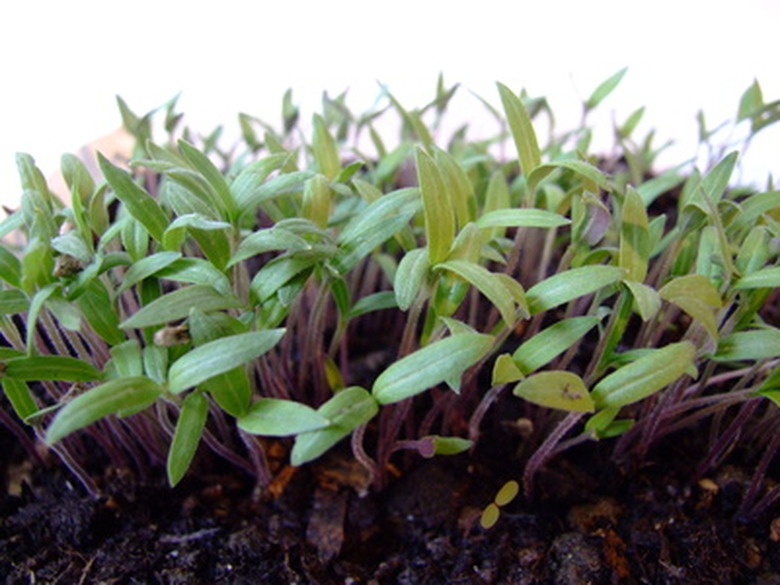How To Transplant From Rockwool To Soil
Few things can break a gardener's heart as much as damping off. Caused by a fungus, damping off will destroy a seed's tissue, sometimes before it has a chance to germinate. Wet, cool soil is usually the culprit. Soilless mixtures, such as peat moss, perlite and rockwool cubes, can help gardeners avoid fungal problems. Rockwool is made from molten rock and pressed into pallets that can then be planted with seeds. When the seeds germinate, and roots begin to grow from the bottom of the cube, it's time to plant the seedlings into the soil.
Step 1
Fill the planting pots, to within 1/4 inch of the rim, with potting soil or the soil recommended for your seedlings.
- Few things can break a gardener's heart as much as damping off.
- Caused by a fungus, damping off will destroy a seed's tissue, sometimes before it has a chance to germinate.
Step 2
Cut the rockwool cubes apart with scissors. Be careful not to cut into the seedlings' roots.
Step 3
Dig a hole in the soil that is the same depth as the rockwool cube and twice the diameter, using your hand.
Step 4
Remove any rockwool from the outside of the cube that you can gently tug away.
Step 5
Place the cube into the prepared planting hole and pack the soil around the base of the seedling.
Step 6
Water the seedling until the water runs out of the bottom of the pot and allow the pot to drain completely before placing it in its permanent location.
Rockwool Vs. Soil
Rockwool's name is derived from the materials that create it. It's a fibrous mix of rock and sand. The slabs are often used for larger plants or rows of plants. Rockwool is lauded primarily for its retention of water and air. For the convenience rockwool affords, it's inconvenient to handle and dispose of. Additionally, the rock and sand fibers do not break down easily, which means all forms of rockwool negatively impact the environment. For example, adding vermiculite increases a soil's ability to retain water. Soil often gives insects a free invitation to munch on your plants.
- Cut the rockwool cubes apart with scissors.
- Additionally, the rock and sand fibers do not break down easily, which means all forms of rockwool negatively impact the environment.
Things Needed
- Planting pots
- Potting soil
- Scissors
Tip
Wear gloves when handling rockwool.
